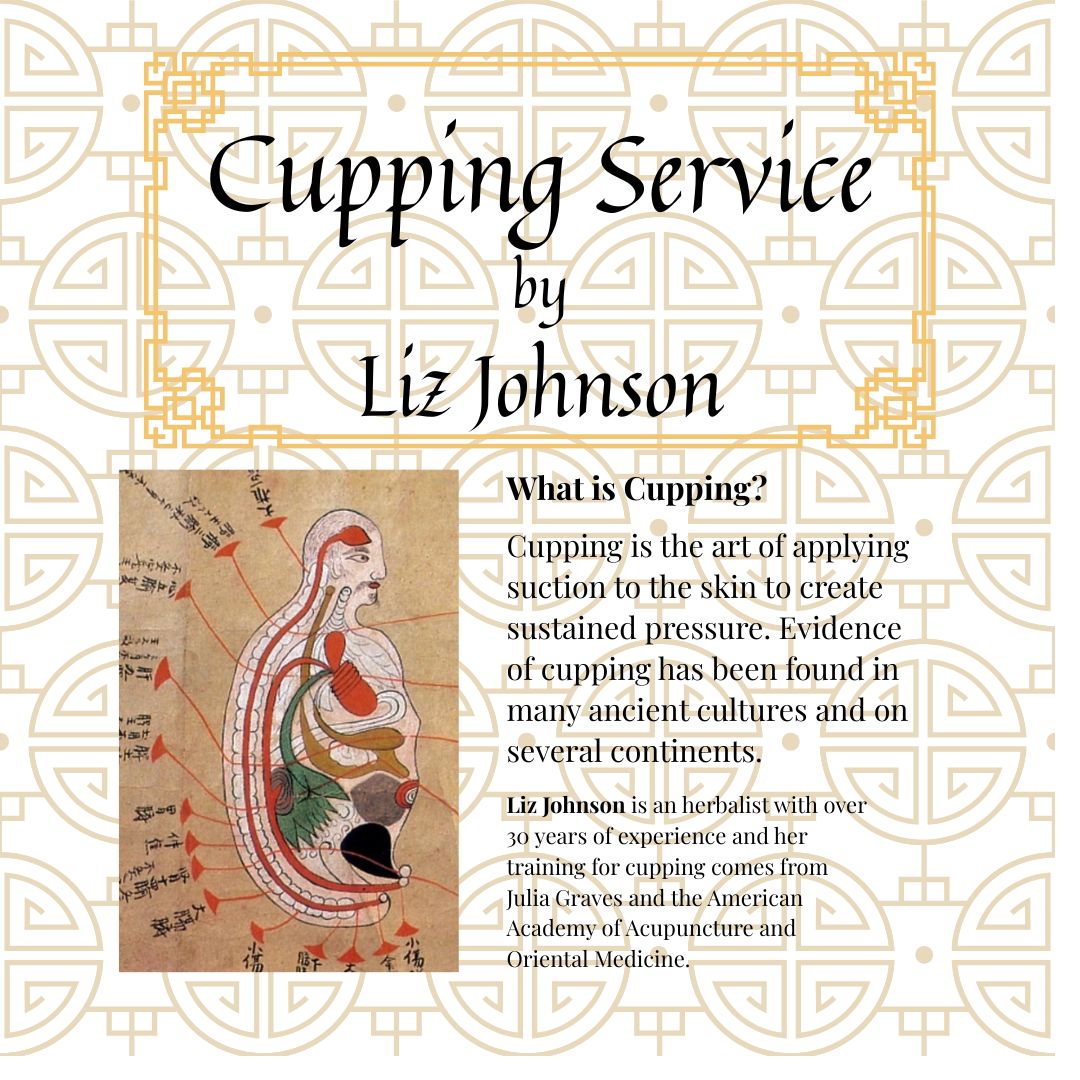Cupping Service
"At once ancient and modern, cupping is a wonderful therapy for health and wellness." -liz Johnson
What is Cupping?
Cupping is the art of applying suction to the skin to create sustained pressure. Evidence of cupping has been found in many ancient cultures and on several continents. There is a written history of cupping in both ancient Greek and ancient Egyptian medicine, and later, in traditional Chinese Medicine and Ayurvedic medicine from India. There are claims of cupping among some native American healing traditions as well and it can be observed to this day in parts of Africa.
Why is Cupping Used?
Cups are used for a wide variety of health concerns, from back pain to menstrual cramping, congested lungs and more. They are a tool to trigger a localized healing crisis which also results in an anti-inflammatory effect. The entire point of cupping is to stimulate the healing processes of the body when it becomes stymied, or stuck, in a given area.
Will I look Funny After Cupping?
Cupping does cause bruising in many people the first few times it is used. The body becomes accustomed to cupping with repeated applications and bruising diminishes over time. As the beneficial effects become more evident, the bruising occurs less and less.
Is Cupping Painful?
Clients experience a gradual relaxation of the muscles being cupped as the pressure of the cups is applied and sits with the body. If there is any discomfort, the pressure of the cups should be reduced.
How does Cupping work?
The pressure that cupping creates is thought to pull lymphatic fluid and blood into the immediate area while relaxing muscles. As lymphatic fluid comes into these areas it cleanses the region while blood feeds the cells with nutrients and oxygen. This is particularly useful in cases in which muscles have been tense, keeping lymphatic fluid and blood from fully repairing and nourishing tissues. The relaxation of muscles happens gradually. As the pressure remains constant, the muscle gradually relaxes into it; then the cups are removed and the relaxation deepens.
Beyond the immediate tissues that are effected by cupping—the skin and muscle, there are other parts of the body effected by cupping. Each area of the skin contains nerves that go to a specific section of the spinal cord. At each little space between two spinal bones these nerves enter the spine along with nerves coming from two other places: a section of muscles and an organ of the body. This junction can be a delicate area that responds to poor health from its muscle section, organ, or skin area by tensing, weakening. and misaligning the back. Cuppists alter the situation by moving the muscle around the spine. This allows the bones to move into a healthier position. Some prefer cupping to chiropractic, others believe they are good for each other and should be used together.
Is Cupping Safe?
Cupping does require training to understand how cups can be applied to benefit the body, mind and spirit, but in the proper hands this is a safe and effective therapy for a variety of health issues.
In my personal clinical experience I have seen first-hand how cupping can give relief to allergies, long term health issues, as an effective adjunct therapy to herbs, reiki, and other healing modalities.
My training comes from Julia Graves and the American Academy of Acupuncture and Oriental Medicine.
FEES
The average appointment is 30 minutes long and costs $45.00. For regular Cupping clients, a Traditional
Healer’s Year of Cupping Contract is available. For a minimum of six appointments, a 15—20% discount is available, depending on the payment plan chosen by the client in their Traditional Healer's Year of Cupping.
